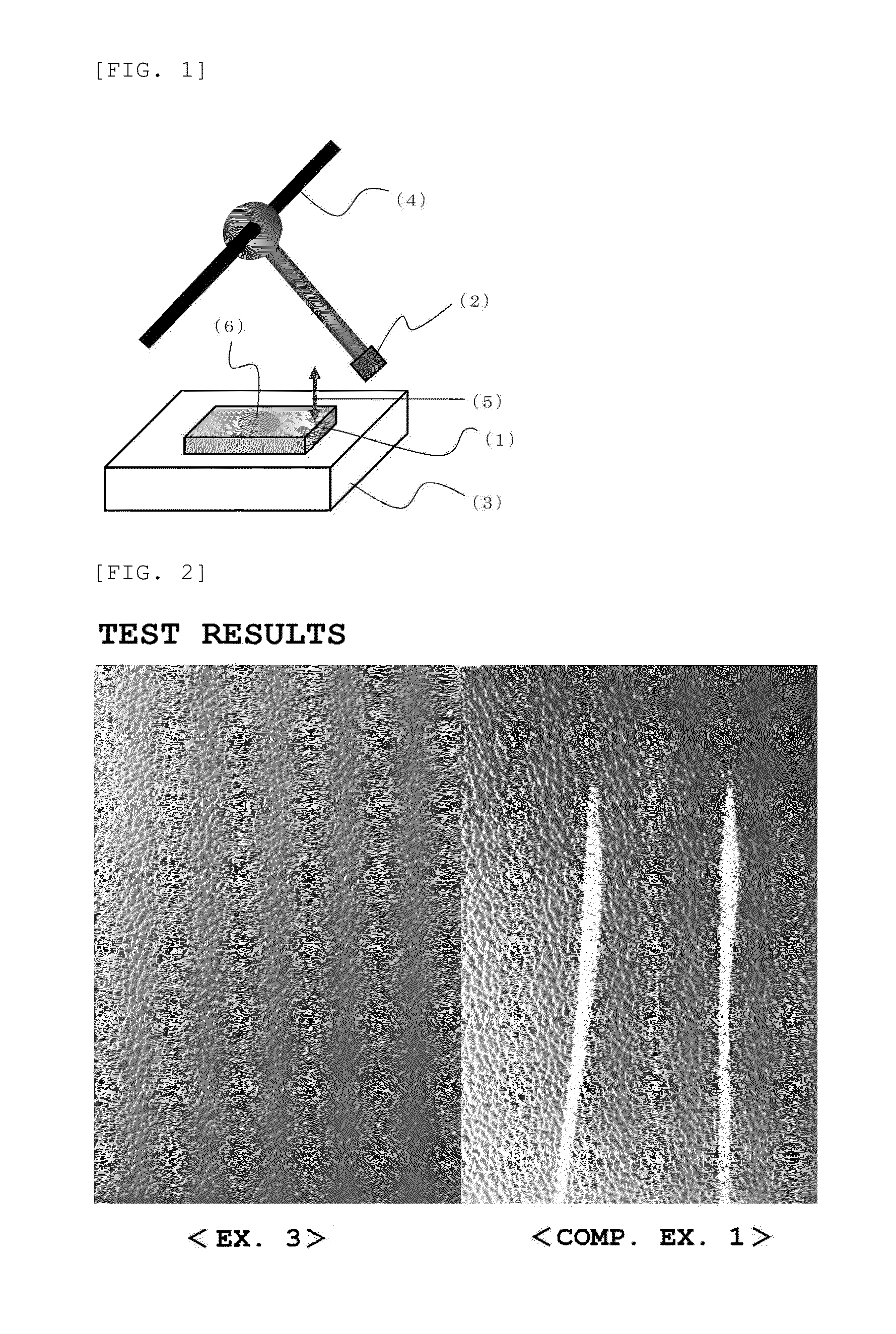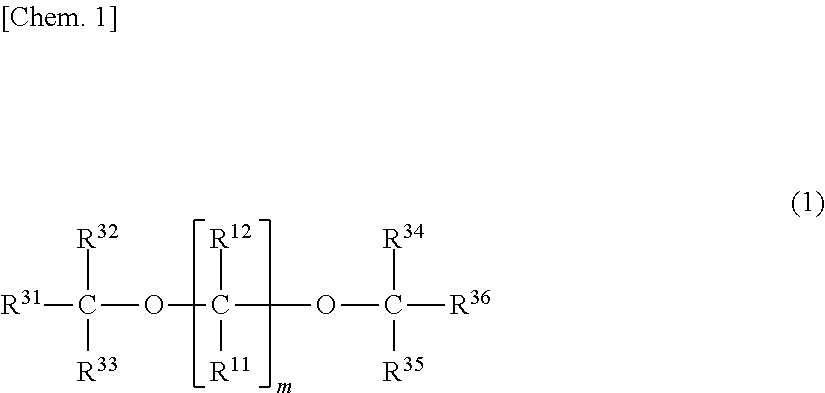Polypropylene resin composition and use thereof
a polypropylene resin and composition technology, applied in the field of polypropylene resin compositions, can solve the problems of deterioration of surface conditions during the actual use of shaped objects, prone to being scratched during assembling or use, and shaped objects with polypropylene resin shaped objects, so as to prevent deterioration of surface properties, excellent shaping properties, and excellent rigidity and impact resistance
- Summary
- Abstract
- Description
- Claims
- Application Information
AI Technical Summary
Benefits of technology
Problems solved by technology
Method used
Image
Examples
production example 1
Production of Propylene Polymer A-1
[0232](1) Preparation of solid titanium catalyst component
[0233]952 g of anhydrous magnesium chloride, 4420 ml of decane and 3906 g of 2-ethylhexyl alcohol were heated at 130° C. for 2 hours to give a uniform solution. To the solution, 213 g of phthalic anhydride was added. The mixture was stirred at 130° C. for 1 hour, and thereby the phthalic anhydride was dissolved.
[0234]The resultant uniform solution was cooled to 23° C. Thereafter, 750 ml of the uniform solution was added dropwise to 2000 ml of titanium tetrachloride held at −20° C. over a period of 1 hour. After the dropwise addition, the temperature of the mixture liquid obtained was increased to 110° C. in 4 hours. When the temperature reached 110° C., 52.2 g of diisobutyl phthalate (DIBP) was added. The mixture was held at the temperature for 2 hours while performing stirring. Next, the solid was collected by hot filtration and was resuspended in 2750 ml of titanium tetrachloride. The susp...
production example 2
Production of Propylene Polymer A-2
[0242]With use of the solid titanium catalyst component obtained in (1) Preparation of solid titanium catalyst component in Production Example 1, (2) a prepolymerized catalyst was produced and (3) main polymerization was performed in the following manner.
(2) Production of Prepolymerized Catalyst
[0243]A 20 L-volume autoclave equipped with a stirrer was loaded with 86.0 g of the solid catalyst component, 39.2 ml of triethylaluminum, 11.0 ml of 2-isobutyl-2-isopropyl-1,3-dimethoxypropane and 4.6 L of heptane. At an inside temperature of 10 to 15° C., 860 g of propylene was fed and reaction was performed for 180 minutes while performing stirring. After the completion of the polymerization, the solid component was settled, the supernatant liquid was removed, and the residue was washed with heptane two times. The resultant prepolymerized catalyst was resuspended in purified heptane. The concentration of the solid catalyst component was adjusted to 1.0 g / ...
production example 3
Production of Propylene Polymer A-3
[0248]With use of the prepolymerized catalyst (the catalyst slurry) obtained by (1) Preparation of solid titanium catalyst component and (2) Production of prepolymerized catalyst in Production Example 1, (3) main polymerization was performed in the following manner.
(3) Main Polymerization
[0249]A 58 L-volume circulation-type tubular polymerization vessel equipped with a jacket was continuously charged with propylene at 45 kg / h, hydrogen at 182 NL / h, the catalyst slurry produced in (2) at 0.41 g / h in terms of the solid catalyst component, triethylaluminum at 2.7 ml / h, and diethylaminotriethoxysilane at 1.1 ml / h. Polymerization was performed in the filled polymerization vessel without any gas phase. The temperature in the tubular polymerization reactor was 70° C. and the pressure was 3.4 MPa / G.
[0250]The slurry obtained was fed to a 100 L-volume polymerization vessel equipped with a stirrer, and polymerization was further carried out by supplying propy...
PUM
| Property | Measurement | Unit |
|---|---|---|
| melt flow rate | aaaaa | aaaaa |
| melt flow rate | aaaaa | aaaaa |
| melt flow rate | aaaaa | aaaaa |
Abstract
Description
Claims
Application Information
 Login to View More
Login to View More - R&D
- Intellectual Property
- Life Sciences
- Materials
- Tech Scout
- Unparalleled Data Quality
- Higher Quality Content
- 60% Fewer Hallucinations
Browse by: Latest US Patents, China's latest patents, Technical Efficacy Thesaurus, Application Domain, Technology Topic, Popular Technical Reports.
© 2025 PatSnap. All rights reserved.Legal|Privacy policy|Modern Slavery Act Transparency Statement|Sitemap|About US| Contact US: help@patsnap.com


